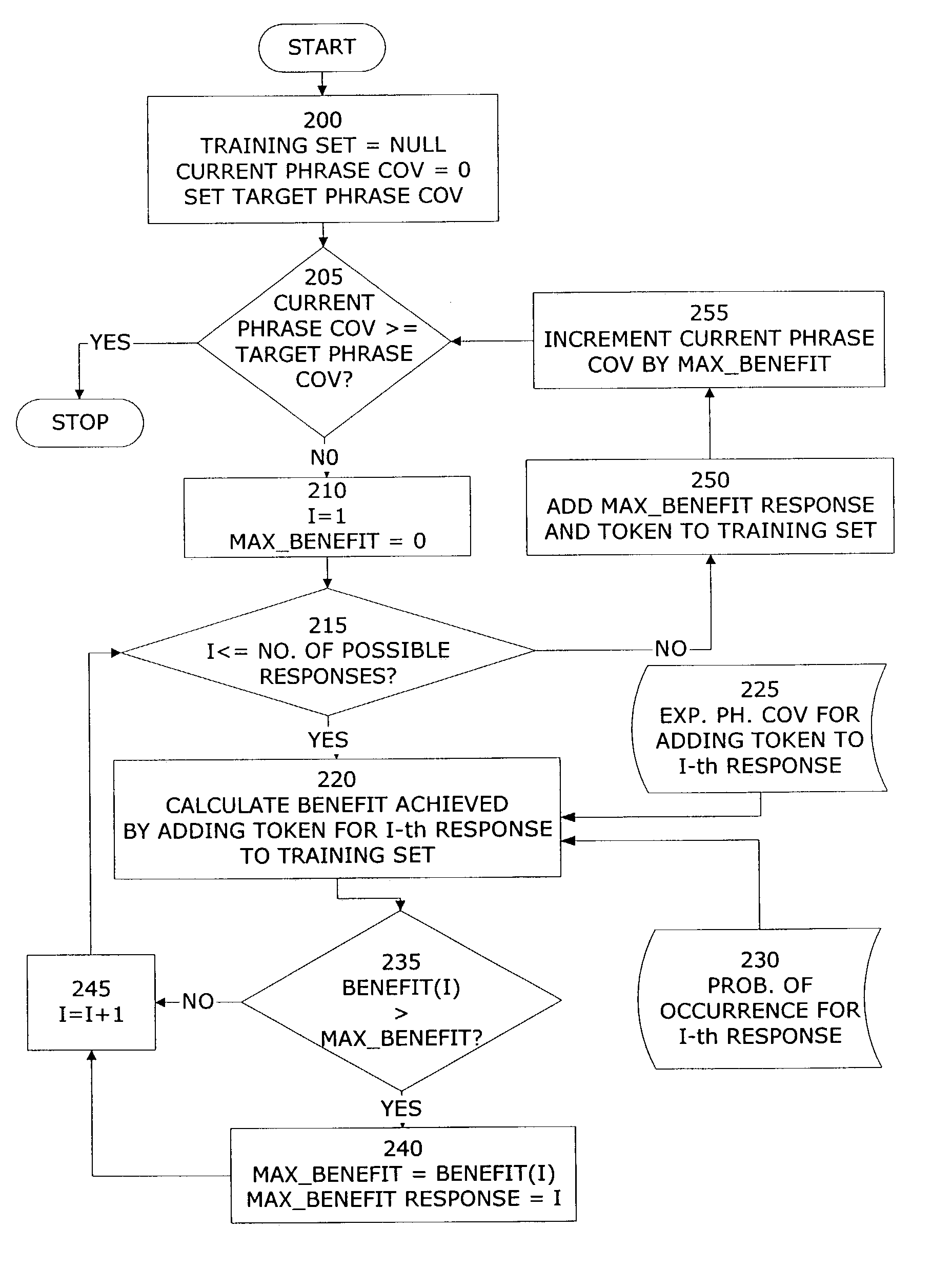Method and apparatus for training an automated speech recognition-based system
- Summary
- Abstract
- Description
- Claims
- Application Information
AI Technical Summary
Benefits of technology
Problems solved by technology
Method used
Image
Examples
Embodiment Construction
[0044]Reference will now be made in detail to preferred embodiments of the invention, examples of which are illustrated in some of the drawings. Notably, the present invention may be implemented using software, hardware, or any combination thereof, as would be apparent to those of ordinary skill in the art. Therefore, the figures and examples below are not meant to limit the scope of the present invention or its embodiments or equivalents.
[0045]It should be understood, for example, that although the following description refers extensively to directory assistance automation systems, directory assistance automation is just one example of the many commercial and non-commercial applications for which the present invention may be advantageously employed. There are many other speech recognition-based applications, such as automated call routing, for example, which can benefit from applying the speech recognition model training techniques and principles embodied in the invention and as de...
PUM
 Login to View More
Login to View More Abstract
Description
Claims
Application Information
 Login to View More
Login to View More - R&D
- Intellectual Property
- Life Sciences
- Materials
- Tech Scout
- Unparalleled Data Quality
- Higher Quality Content
- 60% Fewer Hallucinations
Browse by: Latest US Patents, China's latest patents, Technical Efficacy Thesaurus, Application Domain, Technology Topic, Popular Technical Reports.
© 2025 PatSnap. All rights reserved.Legal|Privacy policy|Modern Slavery Act Transparency Statement|Sitemap|About US| Contact US: help@patsnap.com



